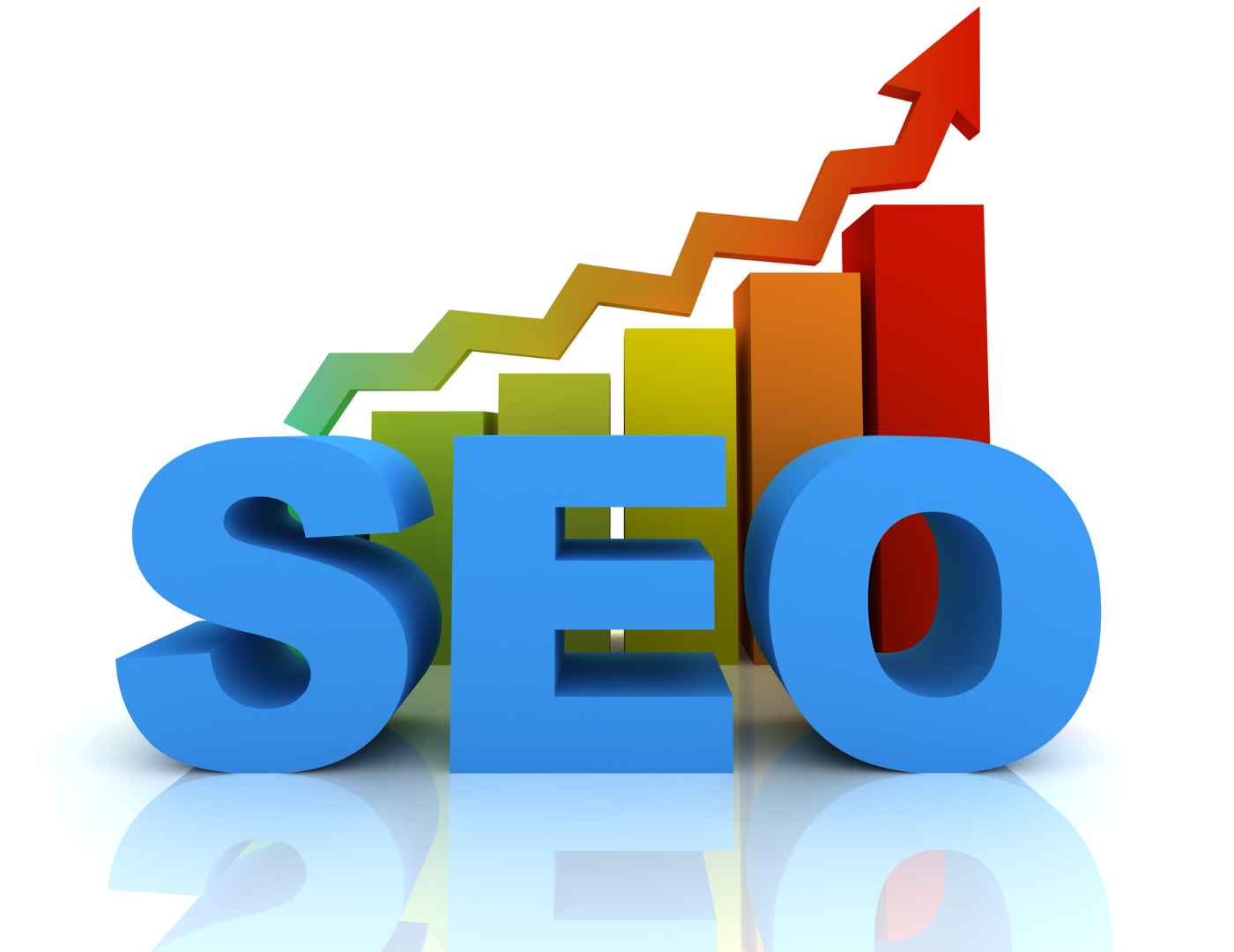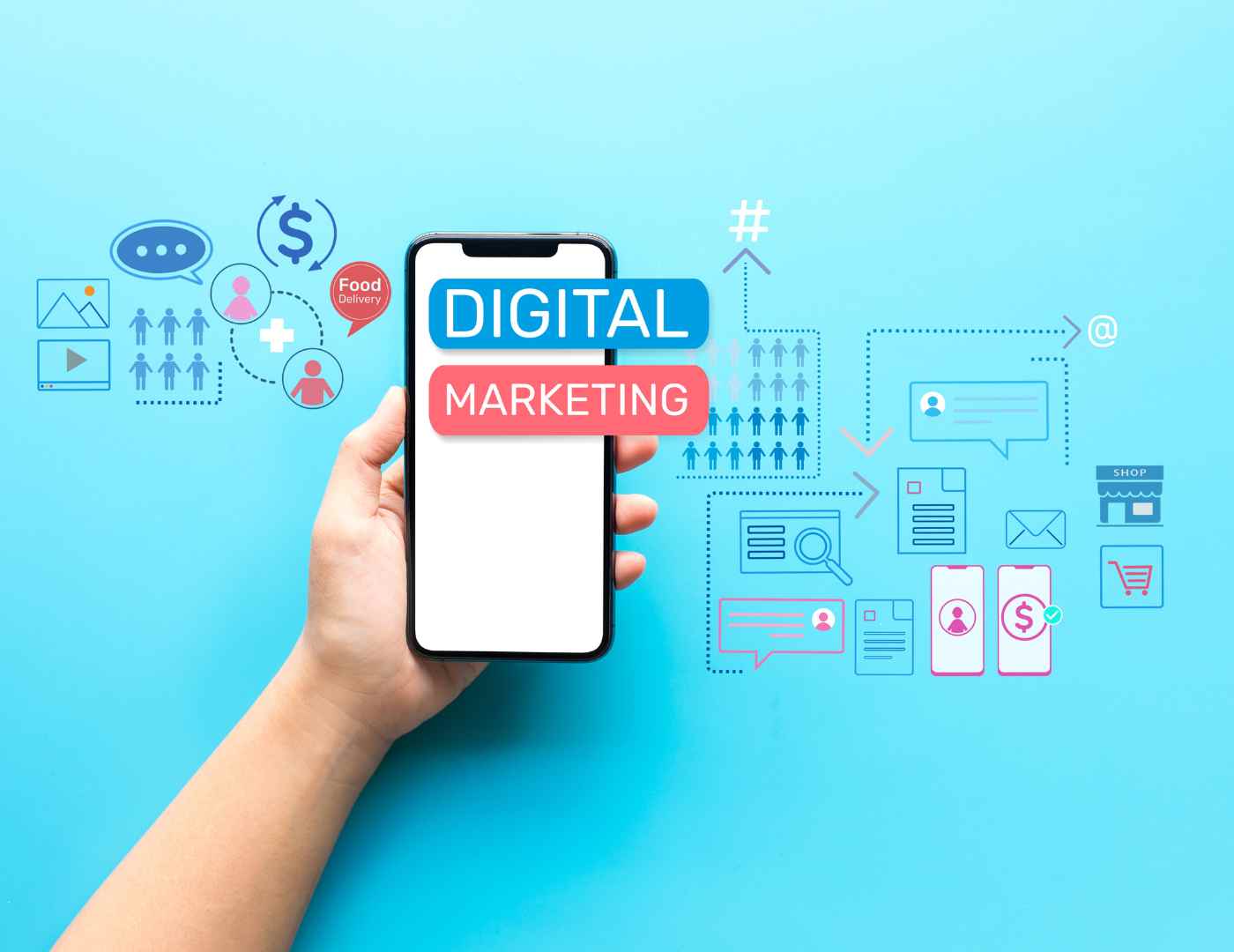How Content Optimization Can Improve SEO Rankings
1. Introduction to Content Optimization
What is Content Optimization?
Content optimization refers to the practice of enhancing web content to meet the specific requirements of search engines and users. It involves making strategic adjustments to text, images, metadata, and internal linking to ensure the content performs well in search engine results pages (SERPs). The goal is not just to create informative, engaging, and readable content but also to ensure that it is structured in a way that search engines can easily understand and index.
Why is Content Optimization Crucial for SEO?
In the digital age, simply publishing content isn’t enough. To ensure visibility and reach, the content must be optimized for search engines like Google, Bing, and Yahoo. Content optimization helps improve a website’s chances of ranking higher in search results, increasing organic traffic, and improving user engagement. Search engines rely on optimized content to match user queries with the most relevant, high-quality pages.
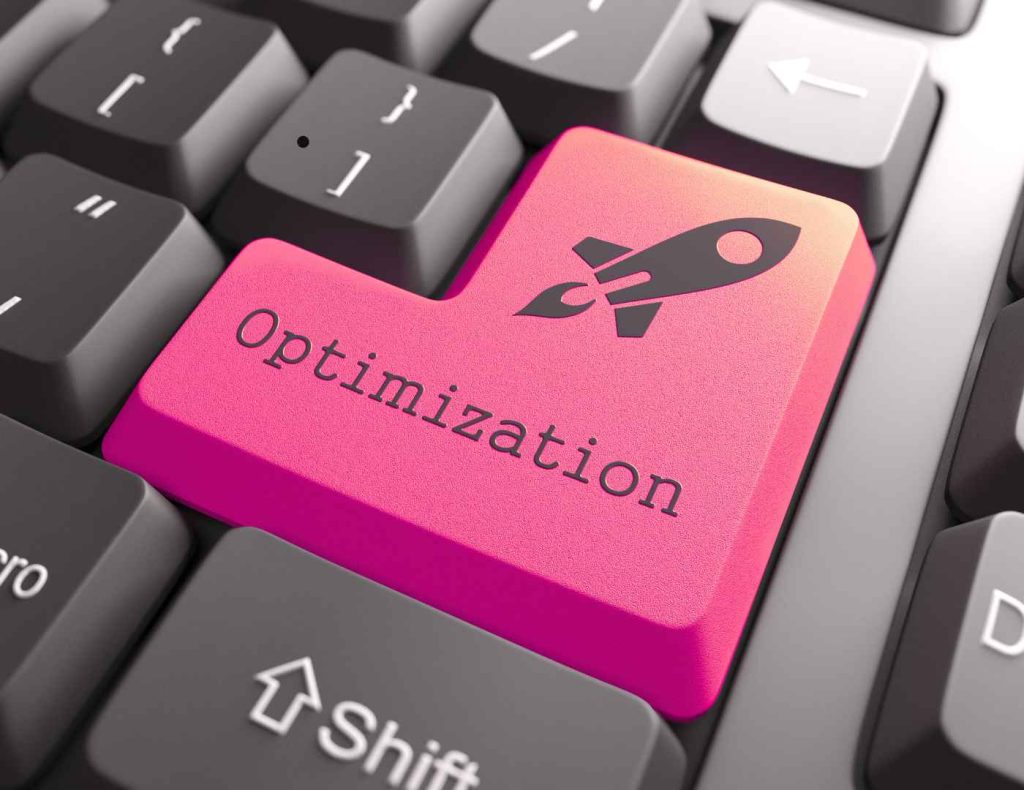
2. Understanding SEO and Its Role in Digital Marketing
The Basics of SEO
Search Engine Optimization (SEO) is a collection of strategies aimed at improving a website’s position in search engine results. SEO involves both on-page factors (like content quality, keyword placement, and internal linking) and off-page factors (such as backlinks and domain authority). These techniques work together to enhance a website’s visibility, making it easier for search engines to index and rank it.
How SEO Affects Website Visibility
Without proper SEO, even the best content will go unnoticed. SEO ensures that search engines can crawl and index a site, making it visible to users who search for related topics. The more optimized the content, the higher the chances it will appear on the first page of search results. Websites that rank higher are more likely to receive organic traffic, resulting in greater engagement and conversions.
3. Key Factors of Content Optimization
Keyword Research and Placement
One of the cornerstones of content optimization is effective keyword research. Identifying the right keywords—terms that users frequently search for in relation to your topic—is essential. Once identified, these keywords should be strategically incorporated into the content, including titles, headings, body text, and meta descriptions. However, it’s crucial to avoid keyword stuffing, which can harm the content’s readability and ranking.
Quality Over Quantity: The Importance of Content Depth
While keyword optimization is important, the quality and depth of the content are paramount. Search engines prioritize content that answers user queries in-depth, providing valuable insights rather than superficial information. A longer, well-researched article tends to rank better because it can cover a topic comprehensively, addressing various aspects that users might find relevant. Therefore, focusing on content quality—writing clear, authoritative, and insightful pieces—is key to improving SEO rankings.
4. On-Page SEO Techniques for Content Optimization
The Role of Meta Tags and Descriptions
Meta tags, including title tags and meta descriptions, are key elements for both SEO and user engagement. These HTML elements provide search engines with information about the content of a webpage. Well-written meta descriptions and optimized title tags can improve click-through rates (CTR) by making the content appear more relevant to search queries. A well-crafted title tag and meta description should incorporate the target keywords and accurately describe the content, encouraging users to click through.
Image Optimization: Enhancing User Experience and SEO
Images play a crucial role in content presentation, but they must be optimized for both speed and SEO. Large image files can slow down page loading times, negatively impacting both user experience and SEO rankings. Proper image optimization involves compressing images without losing quality, using descriptive file names, and adding alt text with relevant keywords. This makes it easier for search engines to index the images and helps improve the overall SEO of the page.
5. User Experience (UX) and Its Impact on SEO
The Connection Between UX and SEO Rankings
User experience (UX) and SEO are intricately connected. Search engines like Google assess not just the relevance of content but also how user-friendly a website is. Factors like page load speed, ease of navigation, and a clean, organized layout contribute to a positive user experience. A well-designed site that prioritizes UX is more likely to retain visitors, reducing bounce rates, and improving the likelihood of higher rankings.
Improving Site Navigation and Mobile Friendliness
Ensuring that a website is easy to navigate and mobile-friendly is essential for both UX and SEO. Google uses mobile-first indexing, meaning it prioritizes the mobile version of a site when determining rankings. A responsive design that adapts to all devices will not only improve user experience but also contribute to better rankings. Clear navigation, intuitive menus, and optimized content for smaller screens are crucial components of a successful mobile-friendly website.
6. The Role of Backlinks in Content Optimization
Why Backlinks Matter for SEO Rankings
Backlinks, or inbound links from other websites to your content, are one of the most important off-page SEO factors. Quality backlinks signal to search engines that other authoritative websites trust your content. The more quality backlinks a page has, the more likely it is to rank higher. However, it’s essential to focus on obtaining backlinks from reputable sites within your industry, as low-quality backlinks can harm your SEO performance.
Best Practices for Building Quality Backlinks
To build high-quality backlinks, focus on creating shareable, valuable content that others in your niche will want to reference. Outreach and relationship building with influencers and bloggers in your field can also help you gain backlinks. Guest posting, content collaborations, and creating valuable resources like infographics or case studies are excellent methods for earning authoritative backlinks.
7. Measuring and Adjusting Content Performance for SEO Success
Using Analytics to Track Content Performance
Once your content is optimized, it’s essential to track its performance to ensure it’s delivering the desired results. Tools like Google Analytics and Google Search Console provide valuable insights into how your content is performing, including metrics like traffic, bounce rate, average time on page, and conversion rates. Analyzing these metrics will help you identify areas that need improvement and fine-tune your content strategy accordingly.
Continuous Content Updates and SEO Improvements
SEO is an ongoing process, and the digital landscape is always evolving. To maintain and improve your rankings, it’s essential to regularly update your content. This could involve refreshing old posts with new information, incorporating new keywords, or adding multimedia elements like videos and images. Regular updates ensure that your content remains relevant and continues to meet the needs of both users and search engines.
Content optimization is an ongoing effort that requires a holistic approach. By employing effective techniques such as keyword research, on-page optimization, improving UX, and building high-quality backlinks, you can significantly improve your website’s SEO rankings. Regularly measuring and updating your content ensures that your site remains competitive and visible in an ever-changing digital landscape.
Top Social Media Marketing Trends to Watch in 2025
Top Social Media Marketing Trends to Watch in 2025
In the ever-evolving world of digital marketing, social media has become a dominant force in shaping how businesses connect with their audiences. Every year, new trends emerge, and it’s crucial for businesses to stay ahead of the curve in order to maintain relevance and drive growth. 2025 promises to bring even more innovation to the social media landscape, and staying up-to-date with these trends is key to achieving marketing success. Let’s explore the top social media marketing trends to watch out for and how they can help your business gain a competitive edge in the digital age.To achieve better results and greater brand growth, you can take advantage of our Social Media Marketing Services

1. Video Content Reigns Supreme
Video has been a key player in social media marketing for some time, but in 2025, it’s expected to dominate even further. Platforms like Instagram, Facebook, TikTok, and YouTube have already made video content a central feature, and the trend is only growing. Video content is not just engaging—it’s also highly effective in conveying messages quickly and effectively. Whether it’s short-form videos, live streams, or tutorials, businesses need to invest in video marketing to stay competitive.
Why Video Works:
- Higher Engagement: Video generates higher engagement rates compared to other types of content.
- Increased Reach: Algorithms on platforms like Facebook and Instagram favor video content, making it more likely to appear on users’ feeds.
- Strong Emotional Impact: Video can convey emotions, build brand trust, and establish a deeper connection with your audience.
As we move into 2025, businesses should focus on creating interactive and engaging video content. Consider adding live-streaming sessions, Q&A sessions, and behind-the-scenes content to give your audience a glimpse into your brand’s story.
2. Artificial Intelligence (AI) Integration
Artificial intelligence has been making waves across various industries, and social media marketing is no exception. In 2025, AI will play a more prominent role in content creation, customer service, and data analysis.
How AI Enhances Social Media Marketing:
- Chatbots: AI-powered chatbots are revolutionizing customer service on social platforms, providing instant responses and personalized interactions.
- Predictive Analytics: AI tools can analyze consumer behavior and predict future trends, helping businesses craft targeted campaigns that resonate with their audience.
- Content Creation: AI can help create content, optimize posts, and suggest the best times to post for maximum engagement.
AI-driven tools will enable businesses to streamline their social media strategies, improve customer interaction, and make data-backed decisions faster than ever before.
3. User-Generated Content (UGC)
User-generated content (UGC) is a trend that continues to rise in popularity. UGC refers to content created by customers or followers that feature a brand, product, or service. This can include product reviews, social media posts, videos, or photos.
In 2025, brands will continue to embrace UGC because it builds authenticity and trust with audiences. Consumers today value authentic content more than ever, and UGC helps establish credibility while fostering a sense of community.
How to Leverage UGC:
- Encourage Reviews and Testimonials: Create campaigns that encourage customers to share their experiences with your products or services.
- Share UGC on Your Platforms: Reposting UGC not only provides fresh content for your feed but also shows appreciation for your community.
- Collaborate with Influencers: Partner with influencers to generate UGC that feels organic and aligns with your brand’s values.
By focusing on UGC, businesses can tap into the power of word-of-mouth marketing, which remains one of the most influential forms of advertising.
4. Social Commerce: Shopping Directly from Social Platforms
Social commerce is a trend that’s gaining significant momentum in 2025. Social media platforms like Instagram, Facebook, and Pinterest are increasingly integrating e-commerce capabilities, allowing users to shop directly within the apps. This is a game-changer for businesses as it removes friction from the shopping experience and allows brands to capitalize on impulse purchases.
In 2025, businesses need to embrace the social commerce trend by optimizing their social media accounts for seamless shopping experiences.
Why Social Commerce Matters:
- Instant Shopping: Consumers can purchase products directly from social media posts without leaving the platform, reducing barriers to purchase.
- Streamlined Experience: Social media platforms allow businesses to create shoppable posts, stories, and ads, making it easier for users to discover and buy products.
- Increased Conversion Rates: With shopping built into social media platforms, businesses can see higher conversion rates as users make purchases more easily.
To take advantage of this trend, businesses should set up shops on their social platforms, create shoppable posts, and utilize product tagging in their content.
5. Personalized Social Media Experiences
In 2025, social media users will expect more personalized and tailored experiences. With advancements in AI and data analytics, businesses can segment their audience and deliver personalized content, offers, and recommendations that resonate on an individual level.
Personalization Strategies:
- Tailored Ads: Use data-driven insights to create ads that target specific customer segments based on their interests and behaviors.
- Content Customization: Offer content that speaks to the specific needs, preferences, and challenges of your audience.
- Personalized Messaging: Implement AI tools to send personalized messages to customers, such as birthday wishes, promotions, or updates based on their activity.
The more personalized the experience, the stronger the connection between the brand and its audience will be. By understanding your customers’ needs and preferences, you can provide a more meaningful and engaging experience.
6. Ephemeral Content: Short-Lived Content that Creates Urgency
Ephemeral content, such as Instagram Stories and Snapchat Snaps, is becoming more popular. These pieces of content disappear after a set period, typically 24 hours, creating a sense of urgency. In 2025, ephemeral content will continue to be a vital part of social media marketing.
Why Ephemeral Content is Effective:
- Creates Urgency: The temporary nature of this content encourages users to view it before it disappears.
- Boosts Engagement: Since ephemeral content is often less polished than traditional posts, it feels more authentic, making it easier for brands to connect with their audience.
- Builds FOMO (Fear of Missing Out): By posting exclusive offers or behind-the-scenes content, brands can create a sense of exclusivity and urgency.
Businesses should integrate ephemeral content into their social media strategy, offering limited-time promotions, sneak peeks, or exclusive events that encourage users to act quickly.
7. Influencer Marketing Evolution
Influencer marketing continues to be one of the most effective ways to drive brand awareness and reach new audiences. In 2025, influencer marketing will continue to evolve, with a greater focus on micro and nano influencers.
Why Micro and Nano Influencers Matter:
- Higher Engagement Rates: Micro and nano influencers tend to have more engaged and loyal audiences, leading to higher interaction rates on their posts.
- Cost-Effective: Partnering with influencers with smaller followings is often more affordable, making it accessible for businesses of all sizes.
- More Authentic Content: Smaller influencers typically create more authentic and relatable content, which resonates more with their followers.
Brands should focus on finding influencers whose values align with theirs and whose audience fits their target demographic. Collaborations with micro and nano influencers can lead to more meaningful results.
8. Augmented Reality (AR) Integration
Augmented Reality (AR) is set to transform social media marketing in 2025. Platforms like Snapchat and Instagram already incorporate AR filters and effects, and businesses can use this technology to create interactive and immersive experiences for their customers.
How AR Can Enhance Social Media Marketing:
- Try Before You Buy: AR allows customers to virtually try on products like makeup, clothing, or accessories before making a purchase.
- Interactive Ads: AR-powered ads create an immersive experience that increases engagement and provides more value to users.
- Enhanced Brand Experience: AR can offer a fun, interactive way for customers to engage with a brand and its products.
Integrating AR into your social media campaigns can help enhance the user experience, create memorable interactions, and drive brand loyalty.
9. Social Media for Customer Service
Customer service via social media is not a new trend, but in 2025, it will become an even more critical aspect of social media marketing. Customers increasingly expect fast responses to their queries, and platforms like Facebook, Twitter, and Instagram have already become key channels for support.
Benefits of Social Media Customer Service:
- Quick Responses: Social media allows businesses to respond to customer inquiries in real-time, improving customer satisfaction.
- Public Interaction: Resolving issues publicly on social media can help build trust and showcase your brand’s commitment to customer service.
- Wider Reach: Social media allows businesses to engage with a broad audience, offering solutions to common problems that may affect others as well.
Businesses should prioritize timely and helpful responses to customer queries, showcasing their brand’s dedication to excellent customer service.
10. Sustainability and Social Responsibility
As consumers become more aware of environmental and social issues, brands are expected to take a stand and advocate for sustainability. In 2025, socially responsible marketing will become even more essential.
How to Incorporate Sustainability into Social Media Marketing:
- Share Sustainability Initiatives: Highlight your brand’s efforts to reduce its carbon footprint, support local communities, or contribute to environmental causes.
- Collaborate with Like-Minded Brands: Partner with other brands or influencers who are committed to sustainability to amplify your message.
- Showcase Ethical Practices: Transparency about ethical sourcing, production processes, and business practices can resonate with socially-conscious consumers.
In 2025, brands that promote social responsibility and sustainability will build stronger relationships with their audiences and attract loyal, like-minded customers.
Conclusion
As we look ahead to 2025, social media marketing is poised for even greater innovation and transformation. From AI-powered strategies to the rise of social commerce, staying up-to-date with these trends is essential for maintaining a competitive edge. By incorporating these top social media marketing trends into your strategy, you can ensure that your brand remains relevant, engaging, and successful in the dynamic digital landscape.
If you’re looking to take your social media marketing to the next level, iMediaNet in Richmond Hill can help you navigate these trends and craft a tailored strategy to boost your brand’s presence and performance online. Contact us today to learn how we can help you stay ahead of the competition with cutting-edge social media marketing services!
On Page SEO Services That Improve Rankings
Your website might look stunning, but if it doesn’t rank on Google, it’s invisible to potential customers. And invisibility online means missed leads, lost revenue, and opportunities going straight to your competitors.
That’s why on page SEO services are essential. They ensure every part of your website is optimized — not just for search engines, but for your visitors, so they stay, engage, and buy.
At iMediaNet, we provide tailored on page SEO services that help businesses rise in rankings, attract the right audience, and convert visitors into paying customers.
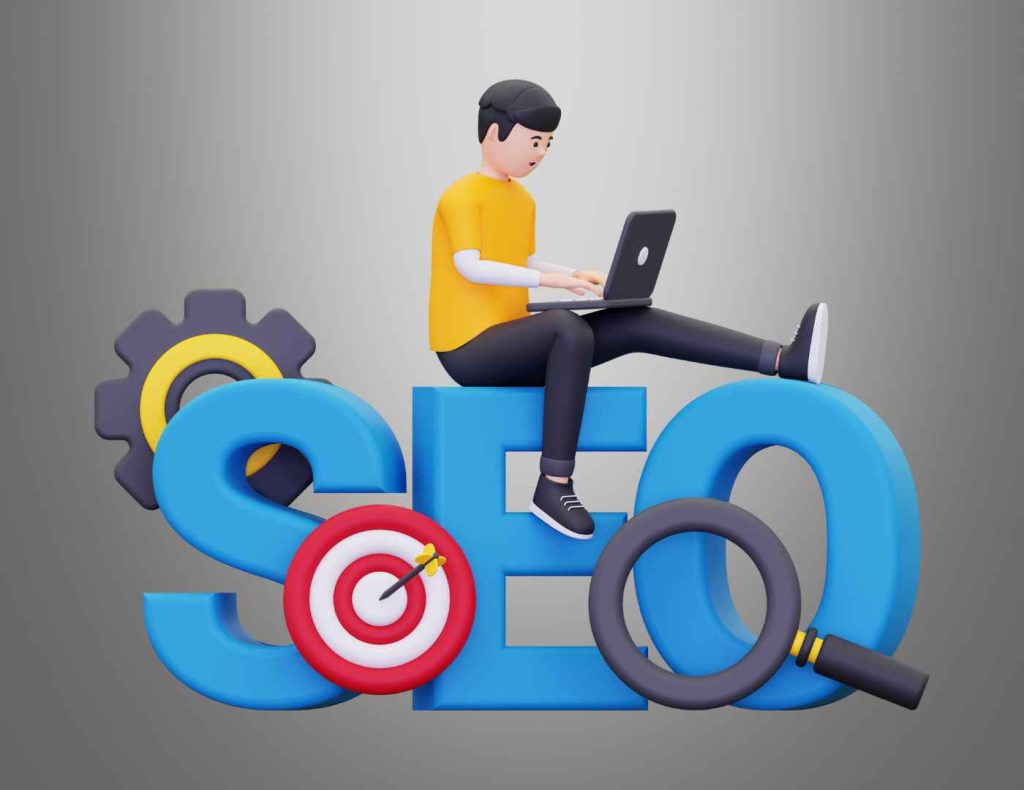
Why On Page SEO Is the Key to Business Growth
When someone searches for your service, do you appear on the first page of Google? Or are you buried under competitors?
Here’s the reality:
- 75% of users never scroll past the first page of search results.
- Click-through rates drop by over 50% between the first and second positions.
- Without on page SEO, even the best-designed websites struggle to convert.
On page SEO ensures:
- Your business gets found by customers ready to buy.
- Visitors enjoy a seamless, trustworthy experience.
- Your content answers questions and drives action.
What Our On Page SEO Services Include
At iMediaNet, we don’t offer cookie-cutter solutions. We deliver customized SEO strategies designed to get measurable results.
1. Keyword Research & Strategy
We uncover the exact words your customers are searching and strategically place them where they matter most: titles, headings, and content. This ensures your website shows up when your audience is looking for you.
Example: Instead of ranking for broad, low-converting terms like marketing tips, we help you rank for SEO services in Toronto or best on page SEO for businesses in Canada — keywords that bring real buyers.
2. Optimized Titles & Meta Descriptions
Your first impression happens in Google search results. We craft click-worthy titles and descriptions that make users choose you over competitors.
3. High-Quality Content Optimization
Google rewards value-rich, engaging content. We refine your pages to:
- Speak directly to your audience’s needs.
- Use natural keyword placement.
- Include CTAs that encourage leads and sales.
4. Clean Site Structure & Navigation
We ensure your website is easy to crawl for search engines and easy to navigate for users. A clean structure keeps visitors moving toward your services or contact page.
5. Mobile & Speed Optimization
Over 60% of searches happen on mobile. If your site is slow or hard to use, customers leave. We optimize speed and mobile experience so your visitors stay longer and convert more.
6. Internal Linking & User Flow
Smart linking guides visitors from blog posts → service pages → contact forms. It’s like building a roadmap that leads them directly to becoming a client.
7. Image & Media SEO
We compress images for speed, add keyword-rich alt text, and ensure every visual element boosts your SEO, instead of slowing you down.
8. Schema Markup for Rich Results
Stand out in search results with star ratings, FAQs, and other rich snippets that build trust and increase clicks.
How On Page SEO Translates Into Customers
When done right, on page SEO does more than just improve rankings — it turns strangers into paying clients.
- From Invisible to Discoverable: Customers searching for your services finally see your business at the top.
- From Click to Engagement: Optimized headlines and content keep them reading.
- From Engagement to Action: Strategic CTAs and user-friendly design guide them to contact you.
In other words: more leads, more sales, and more growth.
What Happens If You Ignore On Page SEO?
Many business owners think SEO is optional — until they see the consequences:
- Low Rankings: Your competitors dominate the first page, stealing your traffic.
- High Bounce Rates: Visitors leave because your site loads slowly or feels outdated.
- Wasted Marketing Spend: You pay for ads or social media traffic, but your site fails to convert.
- Lost Credibility: Customers trust websites that appear higher in search results.
The good news? It’s never too late to fix it — with the right on page SEO services.
Why Businesses Choose iMediaNet
Choosing the right SEO partner can mean the difference between growth and stagnation. Here’s why businesses trust us:
✔ Customized Strategies
No cookie-cutter templates. Every optimization is tailored to your unique business goals.
✔ Results You Can See
We don’t talk in vague promises — we show real growth with measurable data: higher rankings, more leads, and increased revenue.
✔ Transparent Reporting
You’ll always know exactly what’s happening, with clear monthly reports showing progress and ROI.
✔ Long-Term Partnership
SEO isn’t a one-time project — it’s a long-term growth strategy. We stay with you to adapt, optimize, and keep you ahead of competitors.
Real Results From On Page SEO
Our clients across Canada have seen:
- 150% increase in organic traffic within 6 months.
- Leads doubled after fixing on-page optimization.
- Lower bounce rates and longer visitor time on site.
- Stronger online credibility, leading to more sales inquiries.
How We Work With You
- Discovery Call: We learn about your goals, challenges, and target audience.
- Comprehensive SEO Audit: Identify technical issues, missed opportunities, and competitor gaps.
- Custom Strategy Roadmap: Create a step-by-step plan designed for your business.
- Implementation: Our team optimizes your website for rankings, speed, and conversions.
- Tracking & Reporting: Measure success with transparent reports.
- Ongoing Optimization: SEO is never done — we keep improving to maximize results.
The Future of On Page SEO
Search engines evolve constantly, and your business needs to keep up. Future-focused on page SEO includes:
- AI-driven optimization for personalized search results.
- Voice search SEO for customers using Siri, Alexa, and Google Assistant.
- User-experience-first strategies, where engagement metrics influence rankings.
- Video & multimedia SEO to capture attention.
At iMediaNet, we stay ahead of these changes so you never fall behind.
Ready to Improve Your Rankings and Get More Customers?
Your competitors are already investing in SEO — the question is, will you let them take all the leads?
With iMediaNet’s on page SEO services, you get more than just higher rankings:
- More traffic from customers ready to buy.
- A website that works as your best salesperson.
- Long-term growth without the constant cost of ads.
👉 Don’t wait until you’ve lost another customer to a competitor. Contact iMediaNet today and let’s build an SEO strategy that delivers real results.
SEO Solutions That Deliver Results
In today’s highly competitive digital landscape, having a website is not enough. To succeed online, businesses must ensure that their websites are visible, optimized, and capable of attracting the right audience. This is where SEO solutions come into play. By implementing tailored SEO strategies, you can improve your rankings on search engines, increase website traffic, and most importantly, convert visitors into loyal customers.
This article explores customized SEO solutions, why they matter, the key components that drive results, and how choosing the right partner can make a lasting difference for your business.
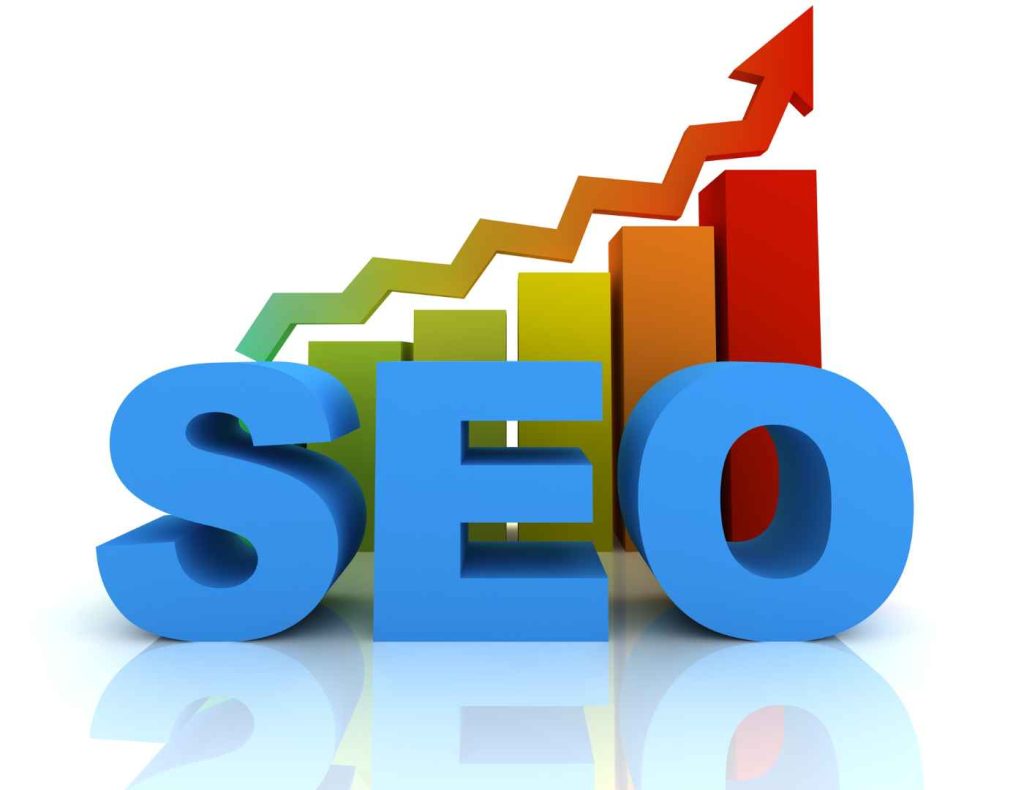
What Are SEO Solutions?
SEO solutions refer to a comprehensive set of strategies, tools, and services designed to enhance a website’s visibility in search engine results. Unlike one-size-fits-all SEO packages, tailored SEO solutions take into account your business goals, target audience, and industry challenges to deliver measurable outcomes.
Why Do Businesses Need SEO Solutions?
- Search Visibility: Without SEO, your website is like a shop hidden in an alley with no signage.
- Targeted Traffic: SEO helps attract users who are actively searching for your products or services.
- Cost-Effective Marketing: Compared to paid ads, SEO offers long-term visibility and sustainable ROI.
- Competitive Advantage: Outperform competitors by appearing higher in search rankings.
The Business Impact of SEO Solutions
When done right, SEO solutions can transform your digital presence:
- Increased Organic Traffic: Higher rankings lead to more clicks and visitors.
- Improved Brand Credibility: Top-ranking websites are seen as trustworthy and authoritative.
- Better Conversion Rates: Targeted SEO strategies bring in qualified leads ready to buy.
- Long-Term Results: Unlike ads that stop when your budget ends, SEO builds lasting visibility.
Core Elements of SEO Solutions
1. Technical SEO
Technical SEO is the foundation of any successful SEO campaign. It ensures that your website is search-engine-friendly by fixing backend issues that can impact performance.
- Site speed optimization
- Mobile responsiveness
- Secure HTTPS setup
- XML sitemaps & robots.txt configuration
- Indexing and crawlability
2. On-Page SEO
On-page SEO focuses on optimizing elements within your website to improve rankings.
- Keyword optimization in titles, meta tags, and headers
- High-quality, SEO-friendly content
- Internal linking structure
- Optimized images and media
- Clear URL structures
3. Off-Page SEO
Off-page SEO strengthens your site’s authority and trustworthiness through activities outside your website.
- High-quality backlinks
- Guest blogging and outreach
- Social media signals
- Online reputation management
4. Local SEO
For businesses targeting a local audience, local SEO ensures that you appear in Google Maps and local search results.
- Optimized Google Business Profile
- Local keywords targeting
- Customer reviews and ratings management
- Local citations and directory listings
5. Content Marketing & SEO
Content is the backbone of SEO. Creating engaging, valuable, and optimized content helps you rank higher and build customer trust.
- Blog posts and articles
- Case studies and whitepapers
- Video SEO
- Infographics and visual storytelling
6. Analytics & Reporting
The success of SEO solutions lies in tracking and measuring performance.
- Keyword ranking reports
- Traffic analysis
- Conversion tracking
- ROI measurement
Tailored SEO Solutions for Different Business Types
Small Businesses
Small businesses need affordable yet impactful SEO solutions to compete with larger competitors.
- Local SEO focus
- Basic content strategy
- Citation building
E-Commerce Stores
For online shops, SEO is crucial to attract buyers.
- Product page optimization
- Structured data and schema markup
- Mobile-first design
- Conversion optimization
Enterprises
Large-scale businesses require advanced, enterprise-level SEO solutions.
- International SEO
- Multilingual optimization
- Advanced competitor analysis
- Complex reporting dashboards
Service-Based Companies
For lawyers, doctors, real estate agents, or consultants, SEO solutions help generate leads.
- Geo-targeted keywords
- Landing page optimization
- Review management
Common SEO Challenges (and Solutions)
- Low Search Visibility: Solve with keyword research and technical SEO.
- High Bounce Rates: Improve site design, speed, and content relevance.
- Poor Mobile Experience: Adopt responsive and mobile-first design.
- Weak Backlink Profile: Invest in quality link building and outreach.
- Stagnant Rankings: Refresh content, analyze competitors, and adjust strategy.
The Process of Implementing SEO Solutions
- SEO Audit: Identify strengths, weaknesses, and opportunities.
- Strategy Development: Create a customized roadmap.
- Implementation: Optimize technical, on-page, and off-page elements.
- Monitoring: Track progress with analytics and KPIs.
- Optimization: Continuously improve based on results and industry changes.
Why Partner with iMediaNet for SEO Solutions?
At iMediaNet, we specialize in delivering custom SEO solutions that drive measurable results. Whether you’re a startup or an enterprise, our tailored approach ensures your business thrives online.
What Sets Us Apart?
- Customized Strategies: No cookie-cutter solutions.
- Expert Team: Specialists in technical, on-page, and off-page SEO.
- Proven Results: Case studies that highlight real business growth.
- Transparent Reporting: Clear insights into performance and ROI.
- Ongoing Support: SEO is a journey, and we’re here every step of the way.
Real-World Results from SEO Solutions
Businesses that partner with us often experience:
- 200% increase in organic traffic within 6 months
- Higher lead generation rates through local SEO campaigns
- Improved brand visibility with optimized content and backlinks
- Sustainable rankings that outlast paid advertising
Future of SEO Solutions: What’s Next?
SEO is constantly evolving. Staying ahead requires adapting to new trends:
- AI and Machine Learning in SEO
- Voice Search Optimization
- Mobile-First Indexing
- E-E-A-T (Experience, Expertise, Authoritativeness, Trustworthiness)
- Video SEO and Interactive Content
Conclusion
SEO is no longer optional—it’s a necessity. By investing in tailored SEO solutions, businesses can gain visibility, attract qualified leads, and achieve sustainable growth. Whether you’re a small business, an e-commerce store, or a large enterprise, the right SEO strategy can transform your digital presence.
If you’re ready to explore SEO solutions that deliver real results, contact iMediaNet today and take the first step toward online success.
Custom Web Design That Converts Visitors into Customers
In today’s digital world, your website is more than just an online presence—it’s your business’s most powerful marketing tool. For businesses looking to stand out, attract the right audience, and drive sales, custom web design is the key to success. Unlike generic templates, a custom-designed website allows you to tailor every element to your brand, your audience, and your business goals, creating a digital experience that not only looks great but also converts visitors into loyal customers.

Why Custom Web Design Matters
Every business is unique, and your website should reflect that. While pre-built templates might seem like a quick solution, they often fail to address the specific needs of your audience or convey your brand’s personality effectively. Custom web design, on the other hand, provides a tailored solution designed to:
-
Enhance User Experience (UX): A website that is intuitive and easy to navigate keeps visitors engaged. Custom web design allows you to structure your content and navigation in a way that aligns with how your users think and behave.
-
Strengthen Brand Identity: Your website is often the first point of contact with potential customers. Custom design ensures that your branding—from colors to typography—is consistent and memorable.
-
Boost Conversions: By focusing on user behavior and conversion-driven elements such as call-to-action buttons, landing pages, and lead forms, a custom website increases the likelihood of turning visitors into paying customers.
-
Improve SEO Performance: Custom web design allows for better optimization of on-page SEO elements, including page load speed, mobile responsiveness, and structured content—factors that can improve search engine rankings.
The Commercial Advantages of a Custom Website
Investing in custom web design is not just about aesthetics; it’s about creating measurable business value. Here’s why businesses see a significant ROI when opting for a tailored website solution:
-
Higher Conversion Rates: Custom websites are built with your audience in mind. By analyzing customer journeys and creating persuasive design elements, businesses can increase sales and lead generation.
-
Reduced Bounce Rates: Visitors are more likely to stay on a website that feels professional, trustworthy, and user-friendly. Custom design helps retain potential customers.
-
Scalability: A custom website is built with your business growth in mind. As your company expands, your website can evolve with it without limitations often imposed by template-based sites.
-
Competitive Advantage: In crowded markets, standing out visually and functionally is crucial. A unique website design can differentiate your brand from competitors who rely on generic solutions.
Key Elements of Custom Web Design That Drive Conversions
To ensure your website is not just visually appealing but also conversion-focused, several elements must be carefully planned and executed:
1. User-Centered Design
Custom web design starts with understanding your users—their needs, expectations, and behaviors. By creating user personas and mapping out customer journeys, designers can craft an experience that guides visitors naturally toward conversion points.
2. Mobile-First Design
With more than half of web traffic coming from mobile devices, a responsive, mobile-first design is no longer optional. Custom web design ensures your website looks and functions seamlessly on smartphones, tablets, and desktops.
3. Clear Call-to-Actions (CTAs)
Effective CTAs are essential for driving actions, whether it’s signing up for a newsletter, requesting a quote, or making a purchase. Custom web design allows you to place CTAs strategically, design them to stand out, and optimize their language for maximum engagement.
4. Fast Loading Speeds
A slow website can frustrate users and increase bounce rates. Custom web design enables optimization of images, scripts, and server configurations to deliver a lightning-fast experience.
5. Search Engine Optimization (SEO)
Custom websites can be optimized for SEO from the ground up. Clean code, schema markup, optimized images, and structured content all contribute to higher rankings and increased organic traffic.
6. Engaging Visual Storytelling
Custom design provides flexibility to incorporate visual storytelling elements like animations, infographics, and interactive content. These elements not only capture attention but also help communicate your brand story effectively.
7. Analytics and Conversion Tracking
A custom website can integrate advanced analytics tools to track visitor behavior, measure conversions, and identify areas for improvement. This data-driven approach allows for continuous optimization of your digital strategy.
Common Mistakes to Avoid in Custom Web Design
While custom web design offers tremendous benefits, certain pitfalls can undermine its effectiveness:
-
Overcomplicating the Design: Complexity can overwhelm users. Keep the interface clean and focused on conversion goals.
-
Ignoring Mobile Users: A design that works on desktop but fails on mobile will lose potential customers.
-
Neglecting SEO: A beautiful website is useless if it doesn’t rank in search engines. SEO should be considered from the start.
-
Slow Loading Times: Avoid heavy graphics or unoptimized code that can slow down your site.
-
Weak Call-to-Actions: Ensure CTAs are clear, visible, and persuasive to encourage user action.
How Custom Web Design Works
The process of creating a custom website typically involves several stages:
-
Discovery and Planning: Understanding your business goals, target audience, and competitive landscape.
-
Wireframing and Prototyping: Creating a blueprint of the site layout and structure before visual design begins.
-
Visual Design: Developing the look and feel of your site, including colors, typography, and graphics.
-
Development: Coding the website using best practices to ensure speed, security, and responsiveness.
-
Testing and Launch: Conducting rigorous testing across devices and browsers to ensure flawless functionality.
-
Maintenance and Optimization: Continuously improving the site based on analytics and user feedback.
Why Businesses Choose iMediaNet for Custom Web Design
At iMediaNet, we specialize in creating custom web designs that convert visitors into customers. Our team combines creativity, technical expertise, and a deep understanding of user behavior to deliver websites that not only look stunning but also drive measurable results.
-
Tailored Solutions: Every website is built uniquely for your business needs.
-
Conversion-Driven Design: We focus on turning visitors into leads and sales.
-
SEO & Performance Optimized: Our sites are fast, mobile-friendly, and optimized for search engines.
-
Ongoing Support: We provide continuous maintenance and optimization to keep your website performing at its best.
Real Results from Custom Web Design
Businesses that invest in custom web design see tangible improvements in key metrics:
-
Increased website traffic and higher search engine rankings
-
Improved user engagement and lower bounce rates
-
Higher conversion rates and increased revenue
-
Stronger brand credibility and recognition
Conclusion
Your website is your digital storefront, and in today’s competitive market, first impressions matter. Choosing custom web design ensures your business stands out, delivers an exceptional user experience, and converts visitors into loyal customers.
If you’re ready to take your online presence to the next level and create a website that truly drives results, contact iMediaNet today and let us craft a custom solution that reflects your brand and grows your business.
Web Design in Toronto | Affordable & Professional Website Services
Introduction
In today’s digital age, having a well-designed website is essential for businesses of all sizes. Whether you are a small business owner, a freelancer, or a large corporation in Toronto, a high-quality website can set you apart from the competition. With Toronto being a hub of technological advancements and a thriving business scene, finding the right web design services is crucial. In this comprehensive guide, we will explore everything you need to know about web design, particularly for businesses in Toronto, including key factors, costs, benefits, and how to choose the best web design agency.
Why Web Design Matters for Canadian Business Owners?

Canada is home to a diverse and competitive market, making an online presence a necessity for businesses. A professionally designed website not only attracts customers but also improves user experience, credibility, and SEO rankings. Some key reasons why businesses should invest in web design include:
-
- Enhanced Online Presence: A well-structured website increases visibility in search engines and attracts more visitors from Toronto and beyond, helping businesses generate more leads and increase conversions.
-
- User Experience (UX) Optimization: Professional web design ensures smooth navigation and an engaging experience for users, catering to the expectations of Toronto-based customers and potential international clients.
-
- SEO Benefits for Local Search: A properly optimized website helps businesses rank higher in search engine results pages (SERPs) when users search for web design services in Toronto, ensuring your business stands out in local search.
-
- Mobile-Friendliness: With the rise of mobile users, having a responsive design ensures accessibility across all devices, improving customer retention and satisfaction.
- Competitive Advantage: A visually appealing and functional website sets your business apart from competitors who may have outdated or inefficient sites.
Key Factors in Choosing a Web Design Company in Toronto
Selecting the right web design agency can be overwhelming, given the number of options available. Here are some key factors to consider:
1. Portfolio and Experience
A good web design company should have a portfolio showcasing past projects. Reviewing their work gives insight into their design style, industry expertise, and technical skills. Look for case studies and client success stories that highlight their impact on businesses similar to yours.
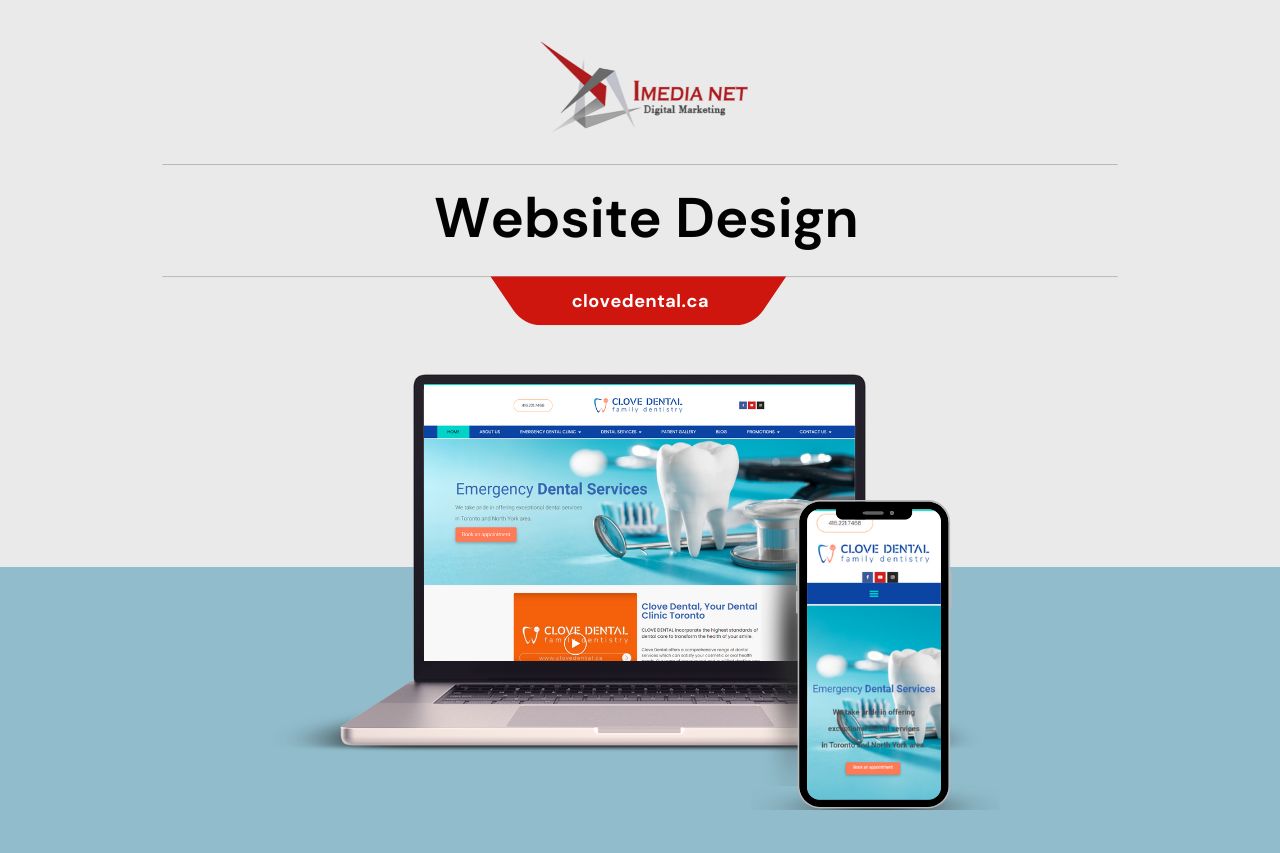
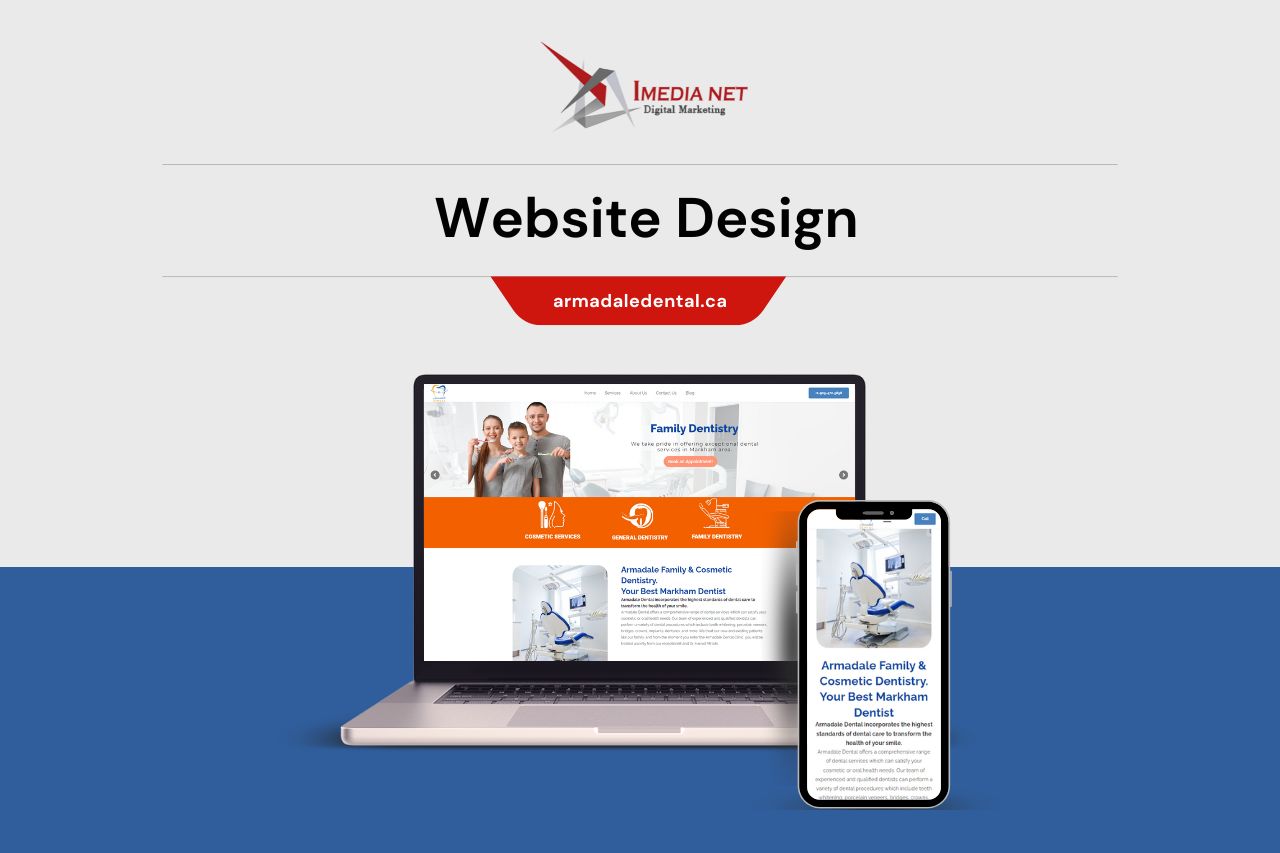
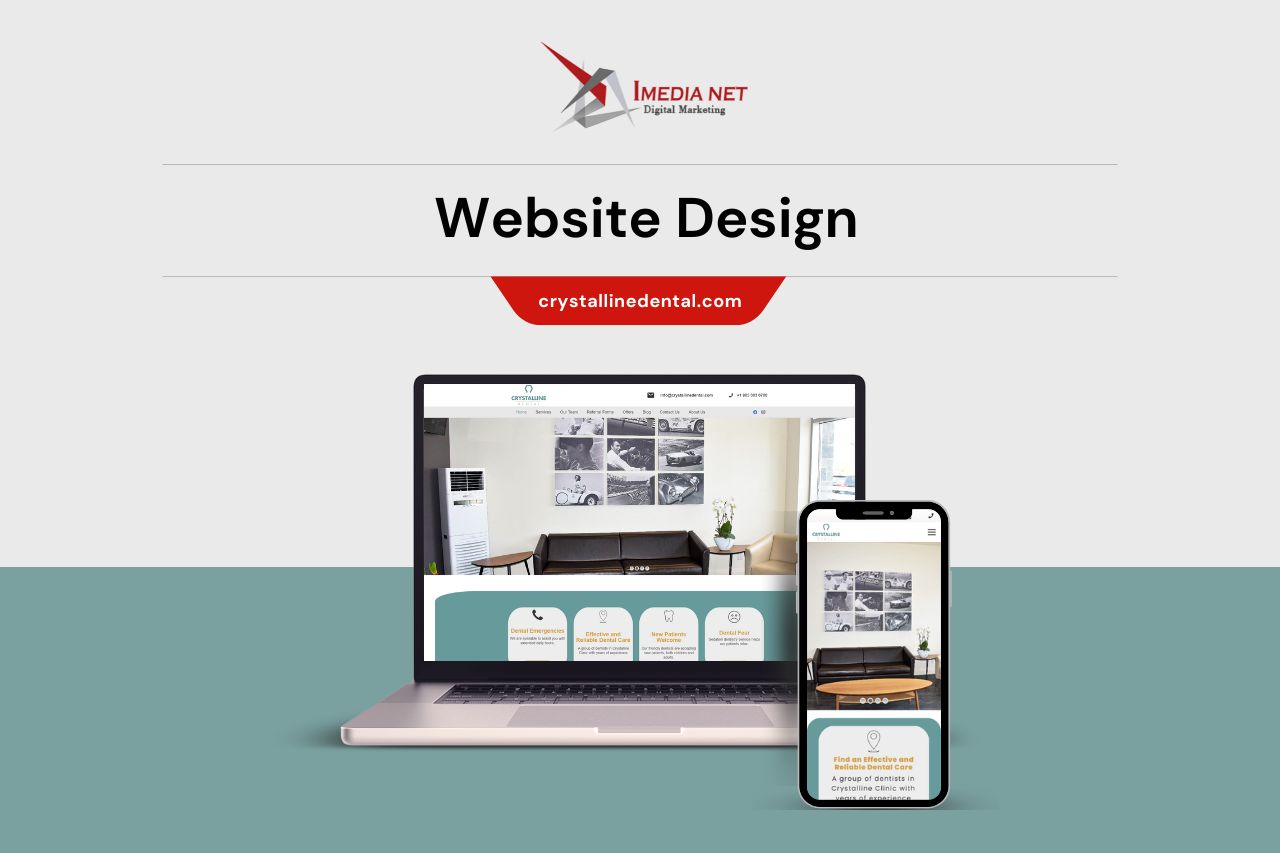












2. Services Offered
- Look for an agency that offers a wide range of services, including:
- Custom website design
- E-commerce development
- SEO and digital marketing
- UI/UX design
- Website maintenance and support
- Branding and graphic design
- Web hosting solutions
3. Client Reviews and Testimonials
Check online reviews on platforms like Google, Clutch, and Trustpilot to learn about customer experiences and the company’s reliability. Positive feedback from past clients indicates high service quality and reliability.
4. Pricing and Budget
Different web design agencies in Toronto offer services at varying price points. However, IMediaNet offers competitive pricing starting from just $500, making professional web design accessible to businesses of all sizes without compromising on quality. This affordable price point is ideal for startups and small businesses looking for cost-effective solutions.
5. Technical Expertise
Ensure the agency is proficient in modern technologies like:
-
- WordPress
-
- Shopify
-
- HTML, CSS, JavaScript
-
- React, Vue, and Angular for dynamic websites
-
- API integrations and custom software development
-
- Advanced website security features
- Conclusion
Investing in web design is crucial for any business looking to establish a strong online presence in Toronto. By choosing the right web design agency, focusing on SEO, and ensuring a user-friendly experience, you can create a website that stands out in the competitive market. If you’re looking for a reliable web design service in Toronto, IMediaNet is the perfect partner to help bring your vision to life with pricing starting at just $500, making professional web design more accessible than ever. Contact IMediaNet today and start building a high-converting website that drives success!
How can you learn online marketing for different objectives?
Unlock the secrets of effective online marketing tailored to your objectives. From setting SMART goals to choosing quality training resources, our comprehensive guide provides a strategic roadmap.
Online Marketing Training: Strategies to Avoid Information Overload
Dive into effective online marketing training with our comprehensive guide. Learn to set SMART goals, choose quality courses, manage your time wisely, take actionable notes, and seek valuable feedback.
Title: Mastering Online Marketing Tools: A Strategic Guide to Success
Title: Mastering Online Marketing Tools: A Strategic Guide to Success
In the ever-evolving landscape of digital marketing, the right set of online tools can be a game-changer for businesses seeking to thrive in the online realm. However, the effectiveness of these tools is contingent upon a strategic approach. In this comprehensive guide, we delve into five key steps to ensure your online marketing tools not only meet but exceed your expectations.
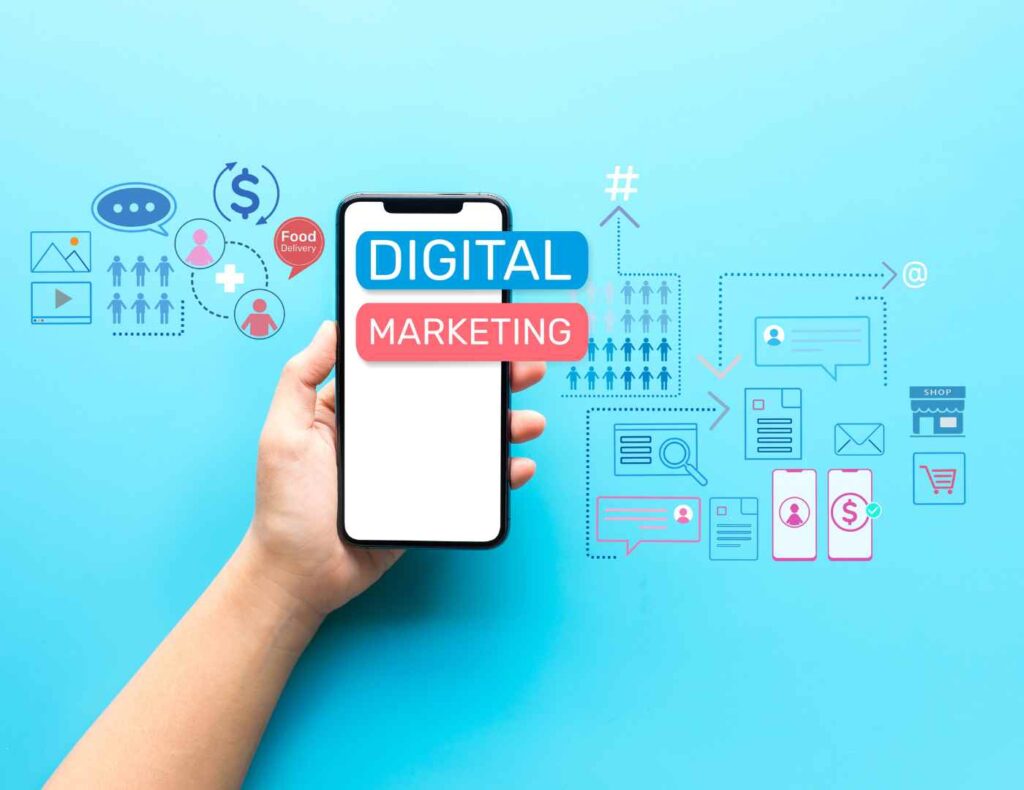
1. Define Your Goals and Metrics
Before embarking on the journey of selecting and utilizing online marketing tools, a crystal-clear understanding of your goals is imperative. Each marketing channel—be it email, social media, SEO, or PPC—might have distinct objectives. Whether it’s boosting email open rates, expanding social media followers, climbing the Google rankings, or generating leads, your goals must be SMART: specific, measurable, achievable, relevant, and time-bound.
2. Choose the Right Tools for Your Needs
The market is flooded with a myriad of online marketing tools, each boasting unique features and capabilities. However, selecting the right tools requires a meticulous evaluation. Start by assessing compatibility with your existing platforms and processes. Scrutinize features to ensure they align with your expectations, and evaluate usability, scalability, and cost. The key is to find tools that not only meet your current needs but can adapt to your evolving requirements.
3. Test and Optimize Your Tools
Once your chosen tools are in place, the journey doesn’t end there. Regular testing and optimization are critical to ensuring that your tools are delivering optimal results. A/B testing, analytics, feedback loops, and experimentation are invaluable methods for fine-tuning your tools. A/B testing helps identify the most effective versions of your content, while analytics provides insights into user behavior. Feedback from stakeholders and customers provides a real-world perspective, and experimentation allows you to stay innovative.
4. Review and Update Your Tools
The digital marketing landscape is dynamic, with trends, technologies, and customer expectations continually evolving. To stay ahead, it’s crucial to regularly review and update your toolkit. Keep an eye on the latest developments in online marketing and explore new tools that may offer enhanced solutions. Evaluate your current tools for performance, relevance, and any gaps that need addressing. Implementing changes or upgrades ensures your toolkit remains aligned with the latest advancements.
5. Learn and Grow From Your Tools
Beyond mere execution, online marketing tools are wellsprings of knowledge and growth. Analyze the data generated by your tools to glean insights for decision-making. Follow best practices and tips offered by your tools and tap into the knowledge of experts and communities associated with them. Experimentation with advanced features opens doors to innovative strategies and approaches.
In conclusion, mastering online marketing tools is not a one-time endeavor but an ongoing process. By approaching your toolkit with a strategic mindset and implementing these steps, you can ensure your online marketing efforts are not just effective but also poised for sustained growth in the dynamic digital landscape.
Navigating the Online Marketing Budget Maze: A Comprehensive Guide
Unlock the secrets of effective online marketing budget management with our comprehensive guide.




